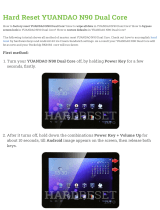
Nomenclature
©Hood mounting index ©Aperture-direct-readoutscale
© Distance scale ®
CPU
contacts
® Infrared compensation index (at 80mm) © Focus ring
©Distance index line ©Zoom ring
© Focus lock buttons © Focus I imit switch
© Focal length scale © Tripod collar lock screw
® Focal length scale index line © Detachable tripod collar
© Focus mode switch © Aperture ring
® Tripod collar alignment indexes @ Meter coupling ridge
©Aperture index/Mounting index ©Aperture indexing post
® Aperture scale @ Minimum aperture signal post
© Minimum aperture lock lever (EE servo coupling post)
Introduction
The AF-S Zoom-Nikkor ED 80-200mm f/2.8D IF employs a Silent Wave Motor inside
the lens to drive the focusing mechanism, thus the "S" designation. As a result,
autofocusing is smooth, silent, and almost instantaneous. In addition, this lens
features internal focusing (IF), so there is no change in the overall length of the lens
from infinity to its closest focusing distance of 1.5m (4.9 ft.), contributing to
balanced hand-held operation. Moreover, five ED (Extra-low Dispersion) lens
elements are used to produce images that are sharp from center to edges and
virtually free of color fringing, regardless of the focal length setting.
Note:
This lens offers Silent Wave autofocusing with Nikon
F5,
F4-Series,
F90X-Series/N90s",
F90-Series/N90*, F70-Series/N70",
Pronea
6001/61*
and Pronea S
cameras.
*
Sold exclusively in the
USA.
Important!
•
Be
careful not to soil or damage the CPU contacts.
• Do not attach the following accessories to the lens, as they might damage the
lens CPU contacts: Auto Extension
PK-1,
PK-11/11A, Auto Ring BR-4,
and K1 Ring.
Other accessories may not be suitable when this lens is used with certain camera
bodies. For details, refer to instruction manual for each product.
• This lens is not compatible when used with a Nikon F3AF camera with the AF
Finder DX-1 attached.
12






















